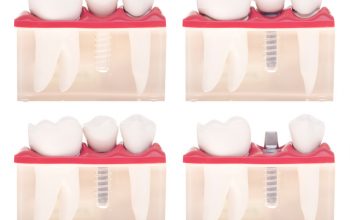

Braces are one of those experiences most people go through as a child. But not every child will need braces or will even experience the process of getting them. Metal braces are the most common type that most people have. But there are a lot of myths surrounding braces. In this article, we will talk about four misleading truths about braces for kids. By the time you are done reading this, you will know the truth, and what you need to do for your child’s braces—armed with this knowledge, you will know what steps to take.
You might be asking yourself, do I need braces on my teeth? That is for your dentist to help you to decide. In this post, we will address some pressing issues involving braces. Topics such as braces cost payment plan, braces under teeth, and even can you get braces on top teeth only. All the essential ideas will help shape your thoughts around braces and the myths surrounding these tools to improve your teeth. Now without further ado, let’s get into the misleading truths about braces for kids.
your dentist to help you to decide. In this post, we will address some pressing issues involving braces. Topics such as braces cost payment plan, braces under teeth, and even can you get braces on top teeth only. All the essential ideas will help shape your thoughts around braces and the myths surrounding these tools to improve your teeth. Now without further ado, let’s get into the misleading truths about braces for kids.
The early stages of a child’s life are very vital. The experience they have as they interact socially could make or break them. Being on the receiving end of teases from other children for having crooked teeth or misaligned jaws could destroy their budding self-confidence.
But again, most parents worry about how their children would look in braces, the effects they would have on their child’s life and the limitations they would place in their daily activities.
But before debunking most myths surrounding braces for kids, let’s look at how you can tell that your kid needs braces?
How to Determine if Your Child Needs Braces
Here are some indicators that your child needs to see a pediatric orthodontist. Orthodontics is a branch of dentistry that specializes in correcting malocclusion, which is the abnormal alignment of the upper and lower teeth.
Misalignment occurs during the child’s development. It could result from a jaw that is smaller than the size of the teeth, or from habits such as thumb sucking. It could cause overlapping teeth and difficulty when chewing.
Treatment for malocclusion involves wearing braces or surgical repair of the irregular teeth. Braces are the best solution for handling malocclusion in children.
The following symptoms are signs that your child may be suffering from malocclusion.
- Abnormal loss of baby teeth
- Irregular placement of teeth
- Thumb or finger sucking
- Incorrect relation between the upper and lower jaw
- Difficulty in chewing and biting
- Jaws and teeth that are not proportional to the rest of the face
To have a malocclusion detected and corrected early enough, you should plan on having your child see an orthodontist as early as six years. And have regular checkups there on.
The orthodontist is well trained to detect any abnormality in your child’s dental structure. They will determine if your child requires braces for kids or not.
Some Common Misconceptions about Braces for Kids
Braces play an important role in straightening your child’s teeth, aligning their bite, creating proportional facial dimensions, and giving your child a beautiful smile.
They achieve this by applying pressure on the teeth and jaws. The pressure works to align the jaws and move the teeth in the desired position. Braces are made of metal.
Here is a fun fact: Nasa was the first to make the metal used for braces.
In spite of these benefits, misconceptions about braces for kids continue to exist.
1) Braces Hurt
Most parents fear that the braces will be painful for the child. But this is not the case. The child may experience some minor discomfort and tenderness a day after wearing the braces due to the pressure they place on the teeth. But it fades within two to three days.
2) The Child Cannot Play Sports with Braces
Most people believe that orthodontics and sports do not go hand in hand. However, active participation in sports should not be a reason to avoid braces. But it is advisable to wear a mouth guard designed for orthodontics when playing for protection against injuries.
3) Your Child Will Have to Give Up Playing Wind Instruments
Playing musical instruments with braces may cause a little soreness at first, and some irritation may result from brass instruments. But your child will adjust in a short period. You can rest assured that they will be comfortable playing beautiful music like the rest of the kids in no time.
4) Orthodontic Treatment Takes Long
Most parents are worried that their children will wear braces forever. However, the average orthodontic treatment takes 18 months. If you are worried about your child’s appearance, recent advancement in the field of orthodontics has seen the emergence of invisible braces for kids.
In conclusion
Numerous myth surround braces for kids, but one thing is for sure; they are beneficial to a child having a malocclusion.
If you are unsure about having your kid wear braces, visit a pediatric orthodontist near you. Ask any questions you may have, and enquire on the different options available such as clear braces. But do not be the reason your child grows up embarrassed about their smile.



